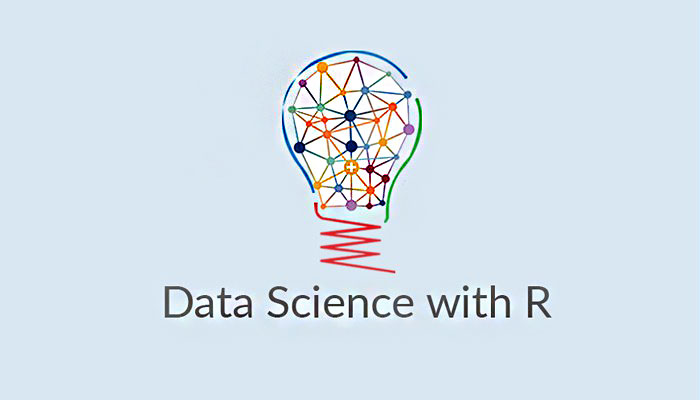
Python Certification Training Course
Python happens to be one of the fastest growing programming languages. This is because it is versatile and at the same time powerful for developers all over the world. Python can be used for web development and visualization that is sure to enable developers to code easily. Python Data Science with R Certification Training would teach you about the basics of python language and at the same time would help you understand the functions as well as controls of python. Data Science Certification Training with R course would also teach you the various concepts of python and how it can be applied to either machine learning or deep learning.
Main Features of Data Science Certification Training
- Intensive instructor-led teaching, assistance, supervision as well as examples
- Understanding and mastery of the basics of the Python programming language.
- Understanding the various aspects and technologies that can be combined to ensure that they are able to code.
Learning Objectives
For Individuals
- Would offer them self-paced learning contents, designs, and models that have been created by top industry experts
For Businesses
- Would offer them cooperate solutions
- Would offer them advanced and enhanced individual and team reporting
- Would offer them well-blended learning contents
Python Certification Training Course Description
Python is the fastest growing and commonly used programming language, it is important that you know how it can be applied to solve some of the world’s problems. Also, Python has been used in different learning and data analysis, so it is important that developers and all programming enthusiasts understand how it functions.
- Would teach you to understand how python works as well as the concepts
- Data Science with R course would teach you how python can be applied to help solve the world’s problems.
- Certified Data scientist course would help you understand certain inter-workings of python and the various types.
- It would also teach you the control and conditional flow
- Created for developers who seek to make use of the Python programming language
Certified Data Scientist with R Course Curriculum
1. Introduction
1.1 Data Visualisation with Tableau?
Visual Analytics with Tableau:
- Introduction to Visual analytics
- Principles of Visual analytics
- Data Interpretation
- Pivot Tables
- Split Tables
- Time Series Chart
Various Graphical Representations:
- Bar Plot
- Scatter Plot
- Istograms
- Box plot
- Word Cloud
- Bubble Chart
- Side by Side chart
- Dual Combinated Chart
Creating Fields:
- Quick table calculation
- Ad-Hoc
- Calculated fields
- Lookup
- If-Else
- Case
- ZN
- Parameter
Working on Maps:
- Symbol Maps
- Animated Maps
- Filled Maps
- Actions between Maps
- Sets
- Dashboards and Storytelling
2. Statistical Analytics using MiniTab
2.1 Overview of Statistical Analytics using MiniTab
Business Statistics:
- Various Data Types: a)discrete, b)continuous, c)Nominal, d) Ordinal, e) Interval Scale, f) Ratio
- Central Tendency
- Measures of Dispersion
- Random Variable
Analysis:
- Probability Distribution
- Normal Distribution
- Skewness
- Kurtosis
- Random Sample
Confidence Interval:
- Confidence Interval
- Sampling Frame
- Z-Calculations
- Central Limit Theorem
- Chi-Square Test
Hypothesis:
- Hypothesis Testing
- Converting Problem to Statistical Problem
- Null Hypothesis
- Alternate Hypothesis
- Case Study on Hypothesis Testing
3. Data Mining using R Language
3.1 Data Mining using R Language
Introduction to R:
- Installing R
- Installing R Studio
- Creating Objects in R
- Creating Arrays
- Creating Data frames
- Use of Structure
- Dimensions
- Loading CSv files, Foreign packages into R
Data Manipulation with R:
- Loading vectors in R
- Combining to vectors in R
- Cleaning Data with R, Swapping Data, Sorting Data, Converting unstructured to structured data, usage of sub, gsub, regexpr, gregexpr, apply, lapply, sapply
Data Visualization with R:
- Usage of Plot, lines, boxplot, stars, barplot, pie, hist, rug, sunflowerplot, various color of histograms, tabplot, ggplot2, maptools and extracting data from URLs
4. Getting Started with Machine Learning
4.1 Machine Learning Foundation
Foundation
Machine Learning Introduction: Supervised and Unsupervised Learning
- Linear Regression Theory
- Linear Regression Programming with R
- Working on Case Study
Multiple Linear Regression
- Theory behind multiple linear regression
- Multiple Linear Regression with R
- Working on Case Study
Decision Tree
- Theory Behind Decision Tree
- Decision Tree with R
- Working on Case Study
Naive Bayes
- Theory behind Naive Bayes classifiers
- Naive Bayes Classifiers with R
- Working on Case Study
Support Vector Machines
- Theory behind Support Vector Machines
- Support vector machines with R
- Improving the performance with Kernals
- Working on Case Study
Association Rule
- Theory behind Association Rule
- Working on Case Studies
5. Text Mining
5.1 Introduction to Text Mining
Introduction to Text Mining concepts
- Sentiment Analysis with R
- Positive and Negative Word Cloud
- Case study on Sentiment analysis
Advanced Regression
- Theory Behind Advanced Regression
- Advanced Regression with R
- Working on Case Study
6. Web Analytics
6.1 Overview to Web Analytics
Theory behind Web Analytics
Working on Case Study








There are no reviews yet.